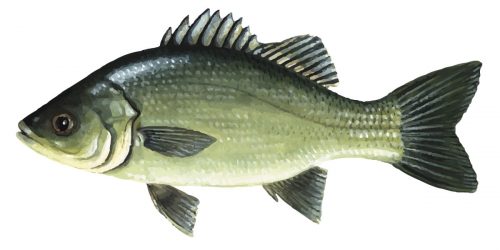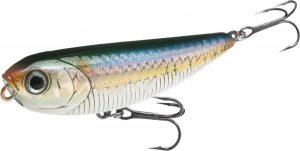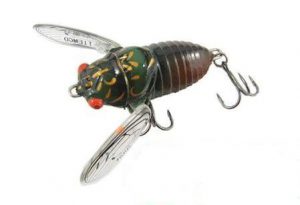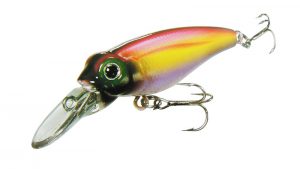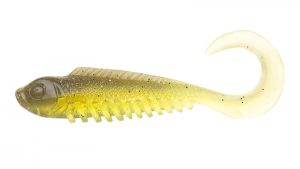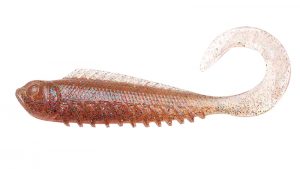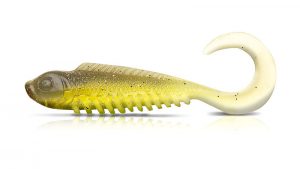Australian Bass Macquaria novemaculeata
Fishing for Australian bass is a summertime love affair for many anglers.
The Australian Bass is an iconic fresh water sport fish, popular due to its aggression towards all kinds of lures.
Pound for pound the Australian Bass puts up a great fight and will readily take surface lures, divers, vibes and soft plastic lures.
Distrubution
Australian Bass are caught from the Mary River near the Bundaberg, right down to Victoria. Native Australian bass spend most of year in fresh water, such as dams, lakes, creeks and estuaries. It is essential for Native Australian Bass to have access to brackish water for breeding.
They are a highly migratory species in estuarine waters. During winter Australian Bass will move down into the brackish waters to breed, this occurs in June, July and August.
The migratory patterns of Australian Bass varies throughout Australia, and is dependent on seasonal rainfall, river flow and man made development such as dams, which completely stops natural migration. In general Australian Bass in estuary systems migrate as follows:
December to February: Move upstream as far as possible
March to May: Move downstream into the lower reaches
June to August: Breeding and spawning in the estuarine system / brackish water
September: Start moving slowing upstream after spawning, still in the lower reaches
October to November: Continue moving upstream, bass often get trapped in deep water holes as the water evaporates from creeks and flow stops
Australia Bass Habitat
Australian Bass seek cover of all forms during the day in summer months. They will take cover in or under timber, rocks, in shade and weedbeds. In the warmer months bass will often take cover in water as shallow as 1m.
At dawn, dusk and night Australian bass can become very active during the warmer months, and will often hunt close to the surface, attacking insects and frogs that fall into the water.
In the Estuarine systems during the winter months of spawning, bass will sit in deep waters often away from all forms of cover.
During the winter months in dams, lakes, deep pools and impoundments where the bass have no opportunity to spawn, they will sit in deep water. The cold temperatures slow the Bass’s metabolism, therefore they sit deep in water often as deep as 30m.
How to catch Australian Bass
Fishing for Australian Bass is a summertime love affair amongst many keen anglers. Catching native Australian Bass is also very accessible, land based, kayak or via a boat. Some of the best bass fishing is done land based, anglers willing to explore small fresh water creeks on foot will most likely be rewarded with a bass.
Bass aren’t very fussy when it comes to lure selection, they will take surface lures like poppers, frogs, walk-the-dog and cicada lures, which is a exciting way to fish. The best time to fish for Australian Bass on the surface is dawn, dusk and at night, in skinny creeks with thick overhanging trees bass can be caught on the surface all day long. Frog lures are particularly successful after rain. Cicada lures work well when you can actually hear cicada’s in the surrounding environment.
A good long cast into shaded areas, beside timber, rocks, under over hanging branches or any kind of structure is the place to target. Pause the lure when it first lands and let the ripples fade, then slowly start working the lure back, this is true for all lures on bass, the initial pause will often increase catch rate.
Poppers
For poppers, small tugs on the rod with 5-10second pauses is affecting, make sure the popper produces a ‘bloop’ sound and leaves a bubble trail, this is key to catching Australian Bass.
Walk the Dog for Bass
Probably the most effective way to bass on the surface in skinny water creeks is with the walk the dog technique. Walk the dog is done by slowly reeling in line while ‘shaking’ the tip of the rod, this action makes the lure dart from left to right and is irresistible to Bass.
Frog Lures
After rains and early mornings are the best time to use frog lures to fish for Australian Bass. Cast out, let the ripples fade, then slowing tug the rod, making the frog online move 10-20cm across the top of the water, this will present the frog as slowly swimming across the surface. Sometimes a few short tugs following by a long 10second pause is just too much for the bass, and they will take it on the pause with aggression.
Cicada Lures on Bass
Using cicada lures to fish for bass is a fun way to catch them, there are several types of cicada lures and they are all effective. The best ones wobble side to side producing ‘bloops’ and a bubble trail with the angler only having to slowly wind the reel. Again put a cast into shade, beside a log or near any structure, pause, then contine to slowly wind the reel in. Make sure to pause the lure often as this is when the might Australia Bass will take the lure.
Recommended Surface lures for catching Australian Bass
Australian bass fishing is a popular recreational activity in Australia. The Australian bass is a freshwater fish found in rivers, streams, and impoundments along the eastern coast of Australia. It is a popular game fish due to its hard fighting ability and its willingness to take lures and flies.
Some popular locations for Australian bass fishing include the rivers and impoundments of the New South Wales and Queensland coasts, including the Clarence River, the Macleay River, the Tweed River, and the Brisbane River. The best time to fish for Australian bass is during the warmer months, from October to April.
When it comes to fishing techniques, Australian bass can be caught using a variety of methods, including bait fishing, lure fishing, and fly fishing. Bait fishing involves using live or dead bait, such as worms or prawns, while lure fishing involves using artificial lures, such as soft plastics, hard-bodied lures, and spinnerbaits. Fly fishing for Australian bass is also popular, with anglers using streamers, nymphs, and dry flies to tempt these fish.
It is important to remember that Australian bass are a protected species, and there are catch limits and size limits in place to ensure sustainable fishing practices. Before heading out to fish for Australian bass, it is important to check the local fishing regulations and obtain any necessary permits or licenses.
